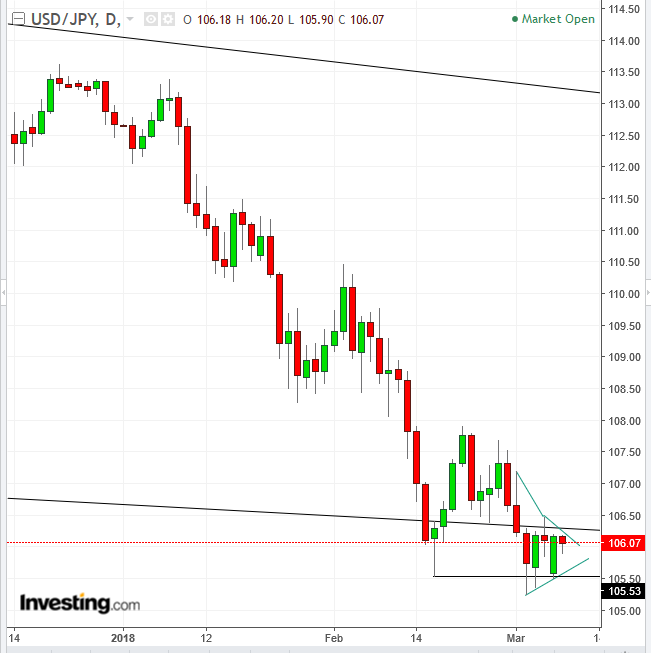The Japanese yen has reached a 16-month high against the dollar. Period.
For those of you who don’t appreciate the significance of the statement above, let me start over.
The fundamental value of a currency is what it yields in the form of interest rates. Therefore, a currency’s trade profit or loss should be dictated by its interest rate differential. When traders enter a forward contract, they agree to buy one currency by selling another. Therefore, traders are liable for the interest rate of the currency they sell and are entitled to the rate of the currency they buy. An interest rate differential is the divergence between these two rates. Traders enjoy a positive interest rate when the differential is in their favor and suffer a negative interest rate when it is against them.
The dollar's interest rate is 1.5 percent, with a consensus of at least 3 more, if not 4 more, rate hikes this year, with a 2.5 percent potential. The yen, on the other hand is at a negative rate of -0.1, with no forecast for a rate hike in general, and definitely not this year. This provides a no-brainer, positive interest rate differential in favor of the dollar. Now, perhaps my opening two sentences make more sense.
The Japanese yen has reached a 16-month high against the dollar. That's it.
So why would any investor in his right mind subject himself to a negative interest differential on the hope the yen will rise further? Additionally, the US is already in the thick of unloading its asset holdings. In contrast, when investors only speculate that BoJ is prepared to talk about unloading its asset holdings, the yen soars.
One would guess that the Japanese economy is growing faster than that of the US. But in the last four quarters, since the time the yen strengthened against the dollar, Japan’s quarterly GDP growth was reported at 0.3 percent, 0.6 percent, 0.6 percent and 0.4 percent. During the same time, the US reported growth at 1.2 percent, 3.1 percent, 3.2 percent and 2.5 percent.
The reason some are choosing the yen over the dollar is the trade deficit, compounded by investment and speculation. The US trade deficit last year was $566 billion. Ironically, a contributing reason for selling fewer imports is the 28 percent rise in dollar strength between 2014-2016. Japan’s current account balance was +$5.73 billion in January alone.
It was the smallest current account surplus in 12 months. For the fiscal year through March 2017, the surplus reached $177 billion, which is 3.8 percent of GDP and the third largest absolute figure on record. This is thanks to falling oil prices (which means the country import less in dollar amounts) as well as the income Japan earns as one of the world’s largest creditor nations.
Its surplus account balance means that foreign buyers of Japanese imports must buy yen in order to pay for the goods, driving up prices. This currency strength attracts foreign investors who buy yen and yen-based assets as safe havens. This further strengthens the yen and yen-denominated assets, attracting speculators.

The pair saw three straight days from February 28 to March 2, creating a flag pole. The consolidation since is due to profit taking and soul searching as investors wonder: the yen reached a 16-month high, can it get any stronger, or is this it?
A downside breakout would imply a move equivalent to the length of the preceding move, the flag pole, with a 103.50 target. However, that would finally break the support of the February 16, 106.03 hammer once and for all, providing a downside breakout to the falling channel since mid-December 2016, eying the key 100 level.
What fundamental reason may be the catalyst for the downside breakout, ending investors’ doubts on whether the yen has further room to rise? Tomorrow's BoJ policy decision, when the central bank—which meets today and tomorrow—may announce an exit to monetary stimulus, perhaps not this year, but in 2019. The sheer excitement may create the volatility needed to resume the prevailing downtrend.
